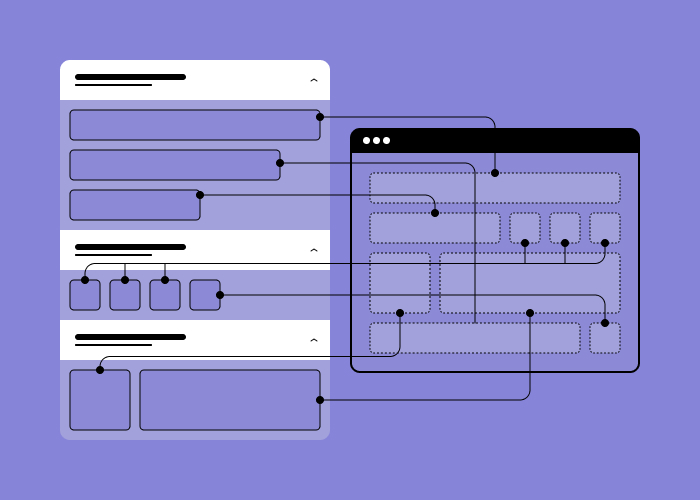Content
How to Build a Magento 2 Website
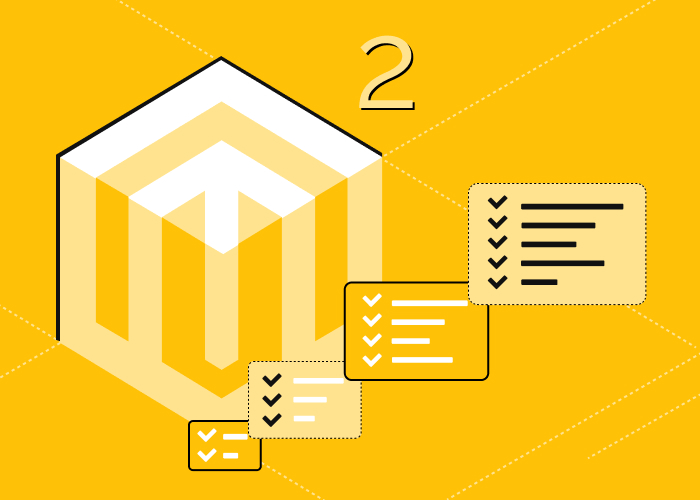
Magento - does this software framework really need an introduction? It is currently preferred and used by almost 770,000 ecommerce entrepreneurs all around the globe.

Image Source: www.nextus-solutions.com
Many deem Magento a perfect CMS because it has everything - high performance, flexible customization opportunities, as well as a colossal online community that can answer any question when it comes to Magento-based website development. With all that in hand, our own team prefers it for professional development too.
We decided to share our experience and clarify all you need to know if you are currently looking up something like “Magento 2 create website” or “Magento 2 create multiple websites”. Just read this article to clarify the topic.
Why Magento?
Still not sure why exactly more and more online entrepreneurs are choosing Magento? There are real-world examples of websites that should give you more than a hint.
Sites using Magento 2
Such top Magento 2 websites as Helly Hansen, Ford, Vizio, Nestle Nespresso, Nike, and Samsung get thousands of regular users and boast extraordinary conversion rates largely due to the capacities of the platform.

Image Source: images.ctfassets.net
This should dispel any doubts about whether to choose Magento for your own project. And here's how you can implement a new solution based on the renowned platform step by step.
Understanding Magento's Family of Web Development Products
In case you are searching for a dedicated eсommerce solution, you should know that there is much that Magento can offer you. Moreover, the important point to take into consideration is that this platform is available in three various options. Let's take a look at all of them:
- Magento Open Source. The edition is free, but in such a case you should host your new e-commerce site yourself. Typically, it means just paying for a hosting plan. This Magento variation provides a great number of advantages even though it has a lower amount of features.
- Magento Commerce. This option used to be named Magento Enterprise. It provides a wider amount of features. Among these features are a drag-and-drop Page Builder and Progressive Web Application (PWA) studio. In spite here you should also select a hosting provider, professional support will be available.
- Magento Commerce Cloud. This is the last Magento's primary product option and it's so similar to the previous one. However, it utilizes an underlying Amazon Web Services (AWS) cloud infrastructure. This infrastructure is able to increase website productivity and also has other useful features.
In case you are just initiating your brand or you have a limited budget, you are likely to select the open-source version of the platform. For people, who are more flexible when it comes to price, the essential decision will be whether you're happy with Magento's AWS hosting, or if you want to look for another provider.
In terms of costs, the sum of money you will spend on utilizing Magento Commerce or Magento Commerce Cloud depends on your annual sales income. The benefits from this system can be obtained by the small stores that are working on creating a client base. Nevertheless, it might be quite expensive.
Magento suggests several additional products, just as a Business Intelligence platform. It has advanced data analysis and tracking and the Order Management tool allows you to manage several shops from one dashboard. No matter which version you are utilizing, you can try a variety of third-party extensions.
6 Steps to Create an Ecommerce Website Based on Magento
Here's where you need to start as a starting out Magento 2 website developer to build a Magento 2 website.
Step #1 - picking a template for the future website
Your journey to building a Magento 2 website starts with choosing the most appropriate template. This is, basically, a skeleton for your resource to be built. When it comes to picking among the existing Magento 2 website templates, here are the basic guidelines:
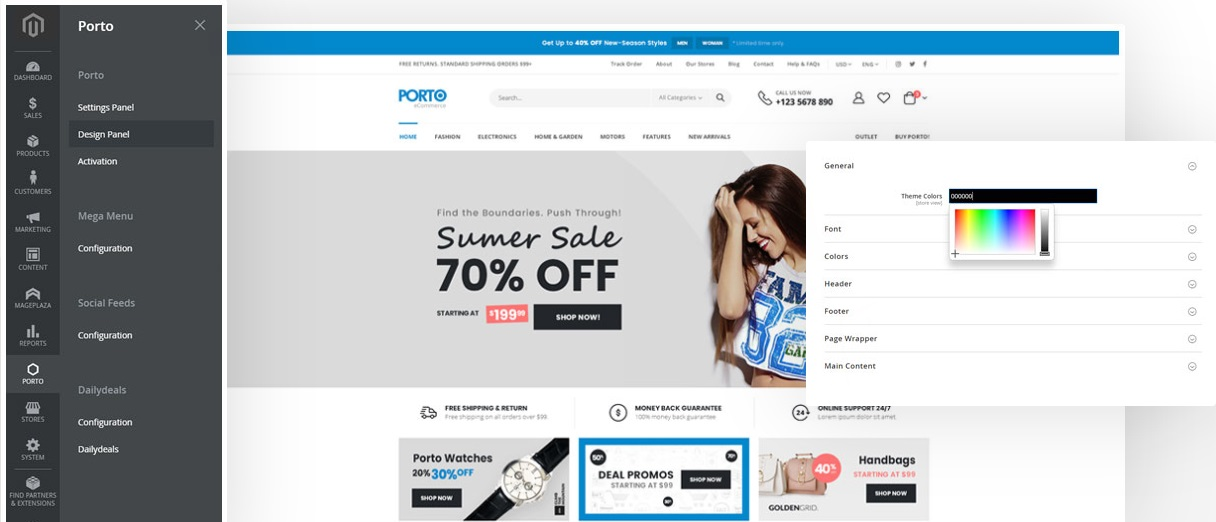
Image Source: www.cloudways.com
- Before looking for something specific, analyze the Magento 2 website design of existing ecommerce solutions in your niche. That will help you settle with the most fitting vibe as well as the location of the menu, sections, functional buttons, filters, etc.;
- Decide which components should be present on the site pages and in what places - in the header, in the footer, and in the main part;
- Create a small layout which would schematically indicate the basic structure of the future online store (just use a sheet of paper and a pen);
- Selecting a template, use the desired structure of the future site for reference because the background and pictures are easy to change, which cannot be said about the location of the key site elements;
- A good template should be supported by most existing browsers;
- It should also have an adapted mobile-friendly version;
- Check whether your preferred template supports RTL, has blog features, AMP, and other functional features that can come in handy potentially.
Check out our review of the best Magento themes for your store.
Step #2 - selecting a hosting
Now, you need to get a Magento 2 website hosting that would help post and enable your future resource online. All in all, there are 3 basic types of hosting for sites using Magento 2:
- Virtual hosting. A certain amount of computing power on a remote server is dedicated to hosting your website. It is believed that this is the most cost-efficient option, which is suitable for sites with several thousand pages (if necessary, extra memory can be purchased). However, the load on the site, in this case, will be limited, so this type of hosting is better suited for sites where the number of users reaches no more than 1.5 thousand people per day.
- Virtual dedicated server or virtual private server. The powers of a physical server are used here as well, however, unlike the virtual server, it is completely independent of other involved parts. If you are going to rent a virtual dedicated server, you get fixed resources as the main advantage. That is, specific characteristics of the processor, disk quota, and RAM become available to the online store, and each of the parameters can be upgraded in the future. It makes sense to choose this type of hosting for online stores that have daily traffic going up to 15 thousand and offer tens of thousands of products in the catalog.
- Dedicated server. Going this way, you get full-package hardware that belongs only to you as a site owner. This is the most expensive option and adds a hefty sum to the cost of the Magento 2 website, requiring a high level of professional training on top of everything. This is the best choice for huge online stores, which are visited by tens of thousands of users daily.
Among the most popular and reliable hosting providers are:
- MageMojo (from $10 per month),
- CloudWays (from $98 per month),
- Rackspace (individual monthly tariffs),
- SiteGround (from $3.95 per month),
- Zerolag (individual monthly tariffs).
Step #3 - setting up a CMS
Now, the main Magento 2 website development process begins.
Before installing Magento and other necessary software, you will need to make sure that your PC or laptop meets the system requirements. Also, don't forget to set Magento file system ownership rights as described.
First, you will need to install the Apache server (if not already installed). There is an installation package for Windows and one for macOS. For Ubuntu, you just need to enter the following lines into the system console:
- sudo apt update,
- sudo apt install apache2.
While it installs, you can use the command for server auto-launch sudo systemctl enable apache2.service.
Next, you need to download Composer - a package manager for managing PHP dependencies. This is optional, you'll need Composer if you are looking to integrate third-party PHP libraries or use PHP packages.
If you work on Ubuntu, use the following console commands:
- sudo apt-get updatemixed,
- sudo apt-get install curlmixed,
- sudo curl -s https://getcomposer.org/installer | phpmixed,
- sudo mv composer.phar /usr/local/bin/composer.
Lastly, download a Magento 2 archive and unpack it on the drive where the Apache server is installed.
Having unpacked it, open a browser and go to http://localhost/magento2. If all the previous steps were implemented properly, you'll see the following:
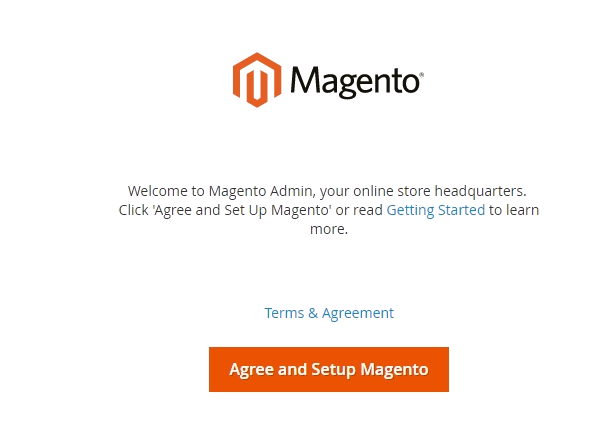
Image Source: cdn.mageplaza.com
Now, just click the red button that says “Agree and Setup Magento” and voila, you activated the Magento 2 installation wizard. You will need to go through a bunch of installation steps, not forgetting to add the database, set the website address in the web settings (in our case, this is http://localhost) and URL for the backend, customize the future store (in this tab, you can connect Google Analytics, Google Adwords, as well as numerous Magento modules), and create an admin account.
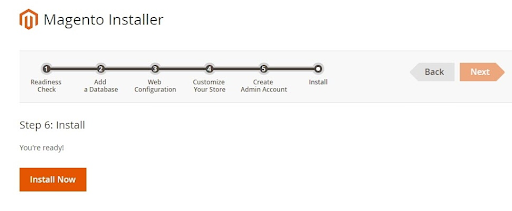
Image Source: cdn2.mageplaza.com
After that, the installation process can be started. Upon completion, you will be able to open the Magento 2-based site already configured and equipped with the modules of your choice.
Step #4 - configuring Magento 2 website design
Now, you can start "refining" the interface of your new site. To do this, you will need to make some configurations in the Content section, namely, configure elements such as:
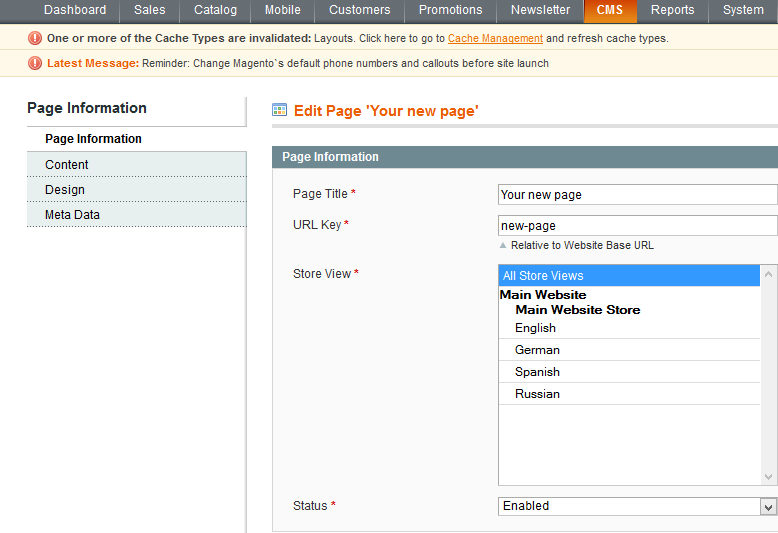
Image Source: www.templatemonster.com
- Pages,
- Blocks,
- Widgets,
- Posts,
- Comments.
Note that the specifics of Content can also be configured separately. You can customize a footer, header, and other smaller page elements. All this is done via the Configure tab.
Step #5 - uploading your first product
Now that Magento has been successfully installed, you can start adding products to your online store. This is done very simply. Here's your route to take:

Image Source: docs.magento.com
Products->Catalog->Add Product
Go there to see Product Details, a section you should fill out.
You can also go to Advanced settings to make extra configurations for cross-selling, simplified inventory management, similar products view, etc.
Step #6 - finishing up
Before an exciting Magento 2 website launch, make sure to add these crucial final touches (which significantly affect Magento 2 website cost too):
- integrate social networks for multichannel sales;
- compose a contact form for buyers;
- connect payment gateways;
- integrate fast authentication methods for quick user registration;
- create multiple website localizations for the future introduction of the website to the international market.
A few words about developing multi-language Magento-based websites, by the way.
How to create a multi-language website in Magento 2?
In order to create a multilingual version of the site, you will have to do the following for each language:
First, go this way:
Stores->Configuration->Locale Options

Image Source: amasty.com
Fill out the required fields, save the configurations, and see the new type of store displayed in the Stores grid.
Simply connect language packages to automate the translation of your website content.
Read also our guide on: How to Build a Marketplace Website and Make It Successful
What Else Do You Need to Know Before Developing a Magento Site?
Usually, business owners stand before two obstacles: uncertainty about the cost of the final solution and the need to modernize an existing solution (usually with the help of extensions). Let's consider both.
How much does a Magento 2 website cost?
Let's talk about the Magento 2 website development cost. First of all, you will have to focus on the set of functions that you want to see in your future online store. For instance, connecting payment gateways, integrating with social networks, developing multilingual versions, and developing extensions - all of these things add significant value to the cost of the "backbone" of the site.
Thus, the final cost of creating a Magento 2 website directly depends on the set of features and preferred hosting services.
How to build a Magento extension?
Building new Magento modules is not an easy task for beginners. Even the official Magento website's utterly detailed tutorial is really difficult to grasp at times. That's why it is better to contact professional developers to create extensions.
We have just the right experts to build a Magento extension for an existing solution. You can expand the functionality without the need to switch the platform or put in any extra effort.
Read our post on: Propelling your E-Commerce Business with Magento 2 Shipping Extension
Conclusion
We hope now you get a big picture of how to create a Magento 2 website.
While Magento setup seems to be the hardest of the above steps, developing a user-attractive and intuitive store design is also challenging. That's why we strongly recommend that you entrust the entire process of creating an online store to professional developers.
Magento 2 create multiple websites - what we offer
We have been providing top-notch Magento 2 website development and optimization in the most various business niches for years. If you need an all-around expert approach to implementing your ecommerce idea, contact us to build a custom Magento 2 site that will be competitive, scalable, and reliable. Drop us a line right now to clarify an approximate Magento 2 website price.
Let professionals meet your challenge
Our certified specialists will find the most optimal solution for your business.


